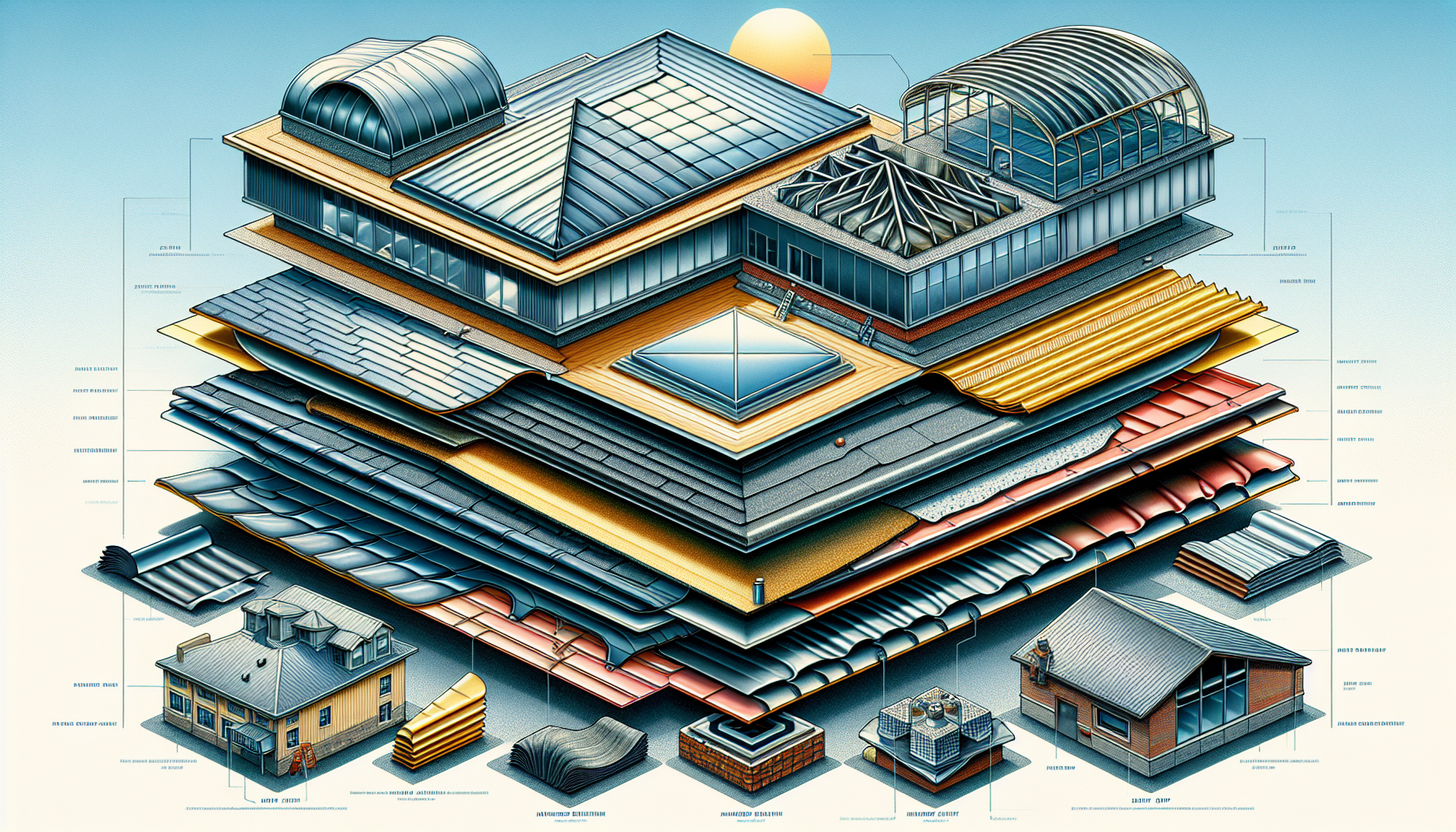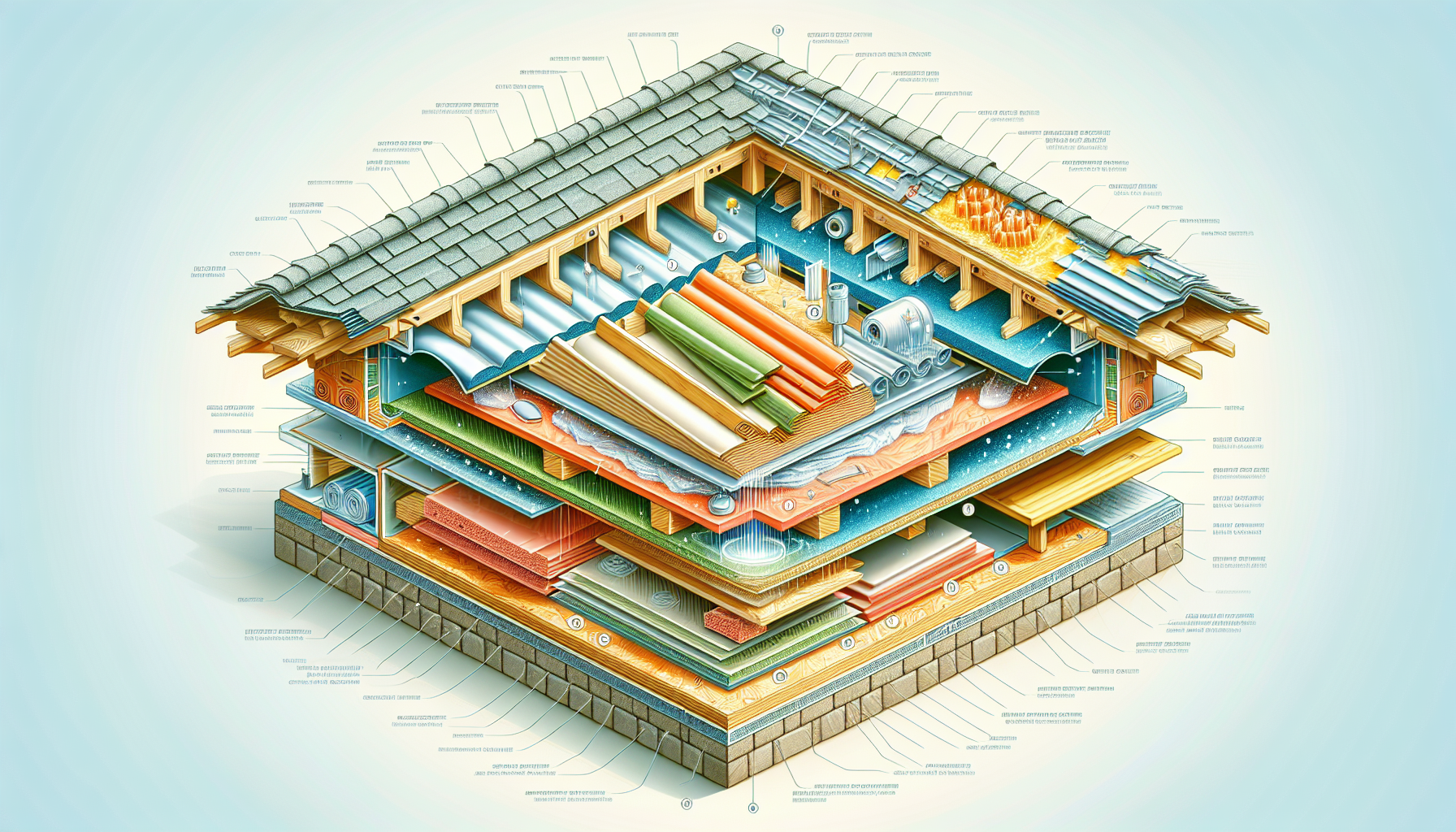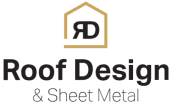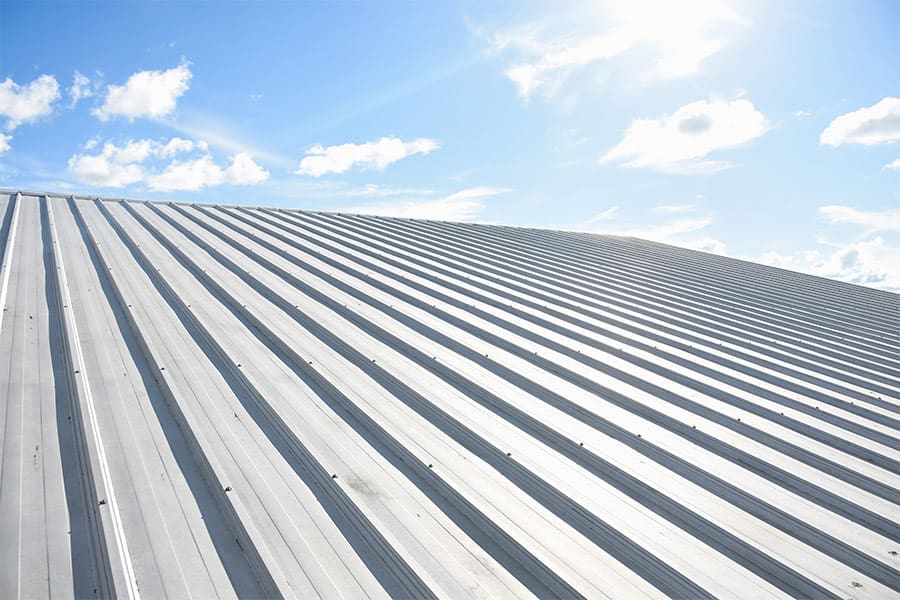When it comes to protecting your business, choosing the correct commercial roofing is key. But with options like single-ply membranes, modified bitumen, and metal systems, how do you decide which is best? This guide breaks down top materials, comparing their durability, cost, and suitability for various building and existing roof types, helping you navigate the sea of choices for an optimal roofing solution.
Key Takeaways
-
The proper selection of commercial roofing materials, such as single-ply membranes, modified bitumen, metal roofing systems, and built-up roofing (BUR), is crucial to ensure the longevity of commercial roofing systems.
-
Essential components of high-quality commercial roofing systems include proper insulation, cover boards, and roof coatings.
Understanding Commercial Roofing Systems

Roofing systems for commercial buildings stand apart from residential roofing not only in terms of scale but also regarding their intricate design. Materials used in these roof systems include:
-
Metal
-
Concrete
-
Single-ply membranes
-
Modified bitumen
These materials are particularly suited to commercial roofs, especially those with flat or low-slope configurations.
Single-Ply Membranes
In the arena of commercial roofs, the spotlight often shines on single-ply roofing solutions. These materials are prized for their synthetic polymer construction that confers lightness and flexibility, significantly expediting installation times.
TPO and PVC membranes stand out among these materials due to their stellar properties including resistance to ultraviolet rays, superior puncture resilience, and a high degree of energy efficiency. The thermoplastic nature of both TPO and PVC allows them to be softened with heat during installation so that seams can be seamlessly welded together — this enhances overall roof integrity while minimizing leakage risks.
Specifically, highlighting PVC’s merits. It possesses exceptional tensile strength coupled with unparalleled defense against moisture ingress, strong winds, and fire hazards—qualities particularly advantageous in regions susceptible to such elements. In contrast, EPDM roofing—a member of the thermoset family—retains its shape upon heating, instead requiring adhesives for securement onto roofs.
Its virtues lie in its robust longevity, minimal maintenance demands, and remarkable pliability even under frigid conditions, all attributes that render EPDM an enduringly reliable solution within commercial roofing sectors. Moreover, the larger sheet dimensions associated with EPDM ensure fewer seams which bolsters durability against leaks while also trimming down timeframes necessary for installations—thereby yielding a cost-efficient option well-suited for expansive roofing endeavors.
Modified Bitumen Roofing
In the realm of commercial roofs, modified bitumen stands out as a strong contender. It is crafted from a mixture that includes asphalt and either polymerized rubber or plastic, coupled with fiberglass to ensure flexibility and durability. This combination makes it an excellent option for flat or low-slope roofs on commercial properties.
The market presents an array of commercial roofing products within this category, primarily distinguished into two types: APP membranes that provide plastic-like characteristics and UV resistance. And SBS membranes are noted for their remarkable elasticity, which allows more versatile installation approaches.
The process to install modified bitumen can be executed via adhesive peel-and-stick sheets or through torch-down application—this method notably augments protection against water intrusion and damage from ultraviolet light.
Metal Roofing Systems
For those in search of strong and sturdy roofing options, metal roofs are an excellent choice. Constructed from diverse materials such as galvanized steel, stainless steel, and stone-coated steel, these systems can be enhanced with protective layers to shield them from corrosion and environmental damage—ensuring a long-lasting and reliable roofing solution.
Metal roofs come with multiple advantages.
-
Superior protection against various weather conditions
-
Visually appealing designs
-
Durable yet not heavy
-
Perfect for commercial structures
-
Exceptionally long service life that spans several decades
Investing in a correctly installed metal roof is beneficial, especially when it’s part of a renovation or installation on top of an old roof during a larger roofing endeavor. This investment often yields substantial returns over time for owners of any given project involving commercial buildings’ rooftops.
Built-Up Roofing (BUR)
These particular roofing solutions are designed with alternating layers of bitumen and reinforced fabrics that come together to form a fully bonded and watertight surface. The advantage offered by this multi-ply approach is an enhanced robustness which lends itself to be a cost-efficient selection for low-slope roofs atop commercial buildings.
BUR assemblies are often colloquially referred to as tar and gravel roofs due in part to their longstanding history within the industry – a testament to their efficacy. Their capacity for excellent water resistance coupled with formidable insulation attributed to their layered architecture stands out amongst roofing choices.
Key Components of a High-Quality Commercial Roofing System

Insulation
Insulation is a critical component of commercial roofing systems, essential for maintaining steady internal temperatures, reducing the demand for HVAC units, and facilitating savings in energy costs.
Various insulation options such as spray polyurethane foam (SPF), rigid board types, fiberglass batts or rolls, and mineral wool cater to building owners with different requirements based on their unique advantages. Different kinds of insulation exhibit varying degrees of fire resistance — a vital characteristic, especially for edifices situated within regions susceptible to fires.
Cover Boards
Cover boards are an essential element of commercial roofing systems, providing access: to multiple performance enhancements such as:
-
Enhanced resistance to wind uplift
-
Protection against hail damage
-
Increased durability for areas with regular foot traffic
-
Additional benefits
Various materials including High-Density Polyiso, Gypsum, OSB, and those containing recycled content are employed in the fabrication of cover boards. Each covered top material contributes unique improvements to the roofing system’s overall performance.
Certain types of cover boards have been developed and specifically designed to reduce the number of fasteners required. This innovation facilitates a more efficient installation process and shortens labor time.
The physical properties such as weight and ease of cutting these cover boards also influence their manageability during transport and affect how smoothly they can be integrated into a roofing project.
Selecting the Right Commercial Roofing Contractor
Choosing the right commercial roofing contractor is crucial as commercial roofing systems are distinct from residential roofing in their material choices.
One such example is that of Roof Design Naples who can assist you with your commercial roofing services needs. The credibility of a roofing contractor can be evaluated through a dedicated reviews page, which aggregates client feedback and demonstrates the company’s strength in performing commercial roofing work.
Proper installation of a commercial roof is pivotal as it ensures the system performs to its full potential and offers the necessary protection to the building. Therefore, when hiring a commercial roofing company or contractor, it is essential to:
-
Verify their license to ensure they are qualified to perform the work.
-
Verify their insurance coverage to protect against liabilities.
-
Ensure they comply with industry and local regulations.
Maintenance and Repair Strategies for Commercial Roofs
Regular upkeep is essential for the longevity and functionality of your commercial roofing system. By implementing a routine maintenance schedule, costs associated with emergency fixes can be significantly reduced. Such proactive measures could increase or extend the service life of a roof by anywhere from 30% to 100%.
The importance of ongoing maintenance for your roofing systems includes:
-
Prompt identification of potential damages
-
Stopping minor issues before they escalate into major, costly repairs
-
Reducing business interruptions due to roofing failures
-
Guaranteeing safety standards
Summary
We have taken an educational journey through the world of commercial roofing – exploring various roofing systems, key components, the importance of choosing the right commercial roofing manufacturer and contractor, and maintenance strategies. Understanding these aspects can help you make informed decisions that ensure maximum protection, longevity, and performance of your commercial roof.

